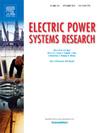Transmission grid and distribution grid flexible planning under high level renewable energy
IF 3.3
3区 工程技术
Q2 ENGINEERING, ELECTRICAL & ELECTRONIC
引用次数: 0
Abstract
The grow prominence of renewable energy has highlighted the need for coordinated planning between transmission and distribution with flexibility. With rapidly increasing levels of renewable energy penetration, flexibility plays an ever more critical role in power system due to the uncertainty and variability of renewable energy generation. Also, there is an urgent need to integrate flexibility in coordinated planning models to effectively manage high levels of renewable energy. In this paper, a novel tri-level method for coordinated planning of flexible transmission grid and distribution grid (TSG-DSG) is proposed considering normal operational conditions and severe fault conditions; moreover, a novel network structure regulation as well as coal-fired power units and energy storage systems are employed as flexible tools for flexibility enhancement of transmission and distribution system under static security and transient stability framework. The model employs a parallel tri-level Benders decomposition & heterogeneous decomposition algorithm to improve computational efficiency. Upper level of the tri-level model minimizes the investment and operational costs under normal operational conditions, while the middle and lower levels minimize expectation of operational costs under faults in the transmission and distribution grids. The proposed method is applied to a real case study HRPTD-20 system. Results demonstrate that the coordinated planning method is both cost effective and computationally efficient. With the proposed methodology, the cost is reduced by 3.3 billion CNY and the renewable energy consumption rate is improved by 6 %.
求助全文
约1分钟内获得全文
求助全文
来源期刊

Electric Power Systems Research
工程技术-工程:电子与电气
CiteScore
7.50
自引率
17.90%
发文量
963
审稿时长
3.8 months
期刊介绍:
Electric Power Systems Research is an international medium for the publication of original papers concerned with the generation, transmission, distribution and utilization of electrical energy. The journal aims at presenting important results of work in this field, whether in the form of applied research, development of new procedures or components, orginal application of existing knowledge or new designapproaches. The scope of Electric Power Systems Research is broad, encompassing all aspects of electric power systems. The following list of topics is not intended to be exhaustive, but rather to indicate topics that fall within the journal purview.
• Generation techniques ranging from advances in conventional electromechanical methods, through nuclear power generation, to renewable energy generation.
• Transmission, spanning the broad area from UHV (ac and dc) to network operation and protection, line routing and design.
• Substation work: equipment design, protection and control systems.
• Distribution techniques, equipment development, and smart grids.
• The utilization area from energy efficiency to distributed load levelling techniques.
• Systems studies including control techniques, planning, optimization methods, stability, security assessment and insulation coordination.
 求助内容:
求助内容: 应助结果提醒方式:
应助结果提醒方式:


